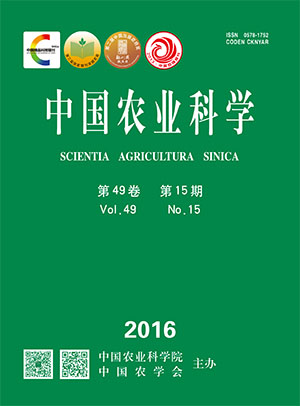-
Soil Amendment and Enrichment Efficiency of Agro-Forestry Models in Serious Earthquake Region of Northern Sichuan Basin
- ZHAO Chang-ping, WANG Jing-yan, GONG Wei, YAN Si-yu, SHU Zheng-yue, CAI Yu
-
Scientia Agricultura Sinica. 2016, 49(15):
2999-3009.
doi:10.3864/j.issn.0578-1752.2016.15.014
-
 Abstract
(
403 )
Abstract
(
403 )
 HTML
(
1 )
HTML
(
1 )
 PDF (411KB)
(
494
)
PDF (411KB)
(
494
)
 Save
Save
-
References |
Related Articles |
Metrics
【Objective】The effects of different agro-forestry models on soil amendment and enrichment efficiency were studied to select the optimum model in serious earthquake region of northern Sichuan basin.【Method】Soil physical properties, nutrient contents and enzyme activities were determined under 8 agro-forestry models (including Pyrus spp+canna edulis (LSJO), Pyrus spp+Vicia faba (LSHD), Pyrus spp+Brassica chinensis (LSYC), Pyrus spp+Ipomoea batatas (LSHS), Juglans regia+Canna edulis (HTJO), Juglans regia+Amorphophallus rivieri (HTMY), Eriobotrya japonica+Glycine max (PPDD), Eriobotrya japonica+ Ipomoea batatas (PPHS)) and farmland control (CK), and the membership function method was used to evaluate soil anti-erodibility, fertility, and amendment and enrichment efficiency of different models.【Result】Compared with the CK, soil non-capillary porosity, capillary porosity, total porosity, ventilation degree, natural water content, maximum water-holding capacity, capillary water-holding capacity, minimum water-holding capacity and drainage capacity of the 8 agro-forestry models were increased by 17.6%-161.8%, 11.6%-32.7%, 12.5%-45.2%, 17.9%-79.5%, 10.7%-35.4%, 13.7%-48.6%, 12.0%-33.1%, 16.4%-58.7% and 10.4%-25.3%, respectively; >0.25 mm soil aggregate (dry sieving), >0.25 mm water-stable aggregate (wet sieving) and mean weight diameter of water-stable aggregates were increased by 0.9%-7.2%, 5.6%-18.1% and 14.8%-138.7%, respectively; ratio of soil structure deterioration and index of unstable aggregate were reduced by 24.0%-51.4% and 17.1%-54.7%, respectively; <0.002 mm clay content, structure particle index, aggregation status, aggregation degree and physical stability index were increased by 15.1%-45.2%, 14.2%-28.9%, 69.3%-417.3%, 58.3%-256.6% and 3.5%-23.9%, respectively; <0.05 mm micro-aggregates content, dispersion rate, erosion coefficient and eroded index were reduced by 5.4%-33.7%, 8.4%-44.1%, 18.0%-49.8% and 19.1%-75.1%, respectively; organic C, total N and hydrolysis N content were increased by 7.1%-46.7%, 4.3%-30.9% and 18.8%-57.5%, respectively; available P and available K content were reduced by 1.7%-29.7% and 20.8%-53.4%, respectively; invertase, phosphatase and urease activity were increased by 17.3%-60.0%, 34.7%-149.2% and 21.0%-102.8%, respectively. The comprehensive value of soil anti-erodibility (CVSA) and amendment and enrichment efficiency (CVAE) in all agro-forestry models were significantly higher than that in CK. The comprehensive value of soil fertility (CVSF) in all agro-forestry models except for LSHS and PPHS were significantly higher than that in CK. Planting canna edulis, canna edulis and Glycine max under Pyrus spp plantation, Juglans regia plantation and Eriobotrya japonica plantation respectively, could gain higher CVSA, CVSF and CVAE. The CVSA positively and significantly correlated with CVSF (P<0.05). 【Conclusion】Planting canna edulis, Vicia faba, Brassica chinensis in Pyrus spp plantation, planting canna edulis and Amorphophallus rivieri in Juglans regia plantation and planting Glycine max in Eriobotrya japonica plantation have significant soil amendment and enrichment efficiency, and are important to improve soil anti-erodibility and soil fertility in serious earthquake region of northern Sichuan basin. The improvement of soil anti-erodibility and soil fertility has a synergistic effect.









